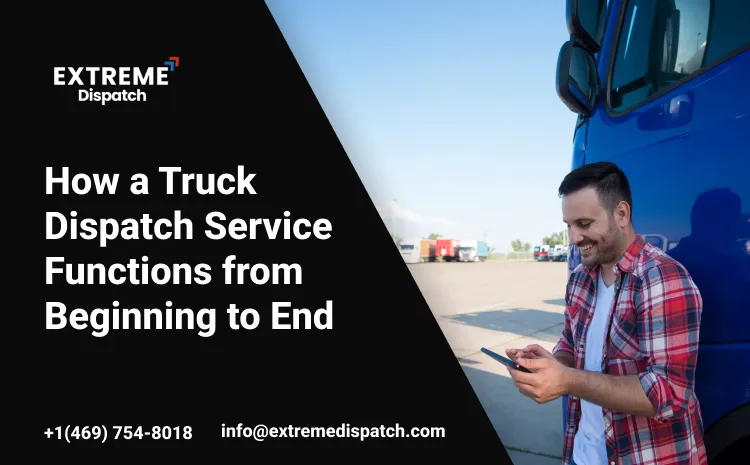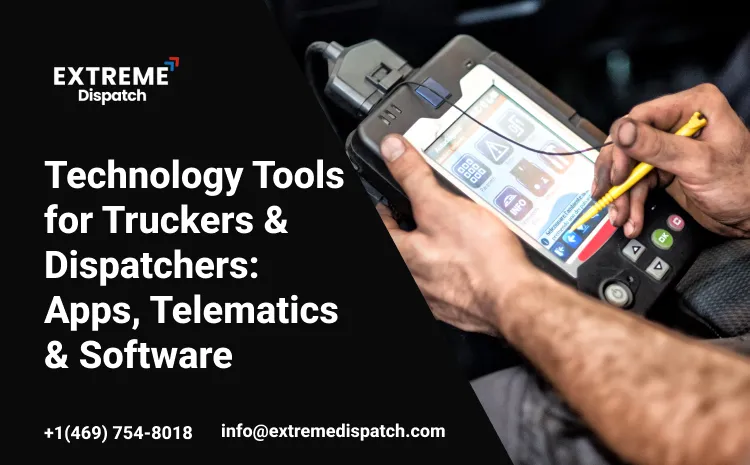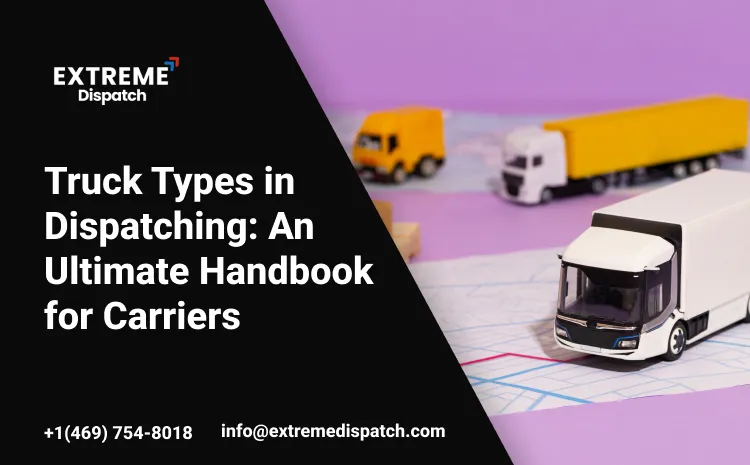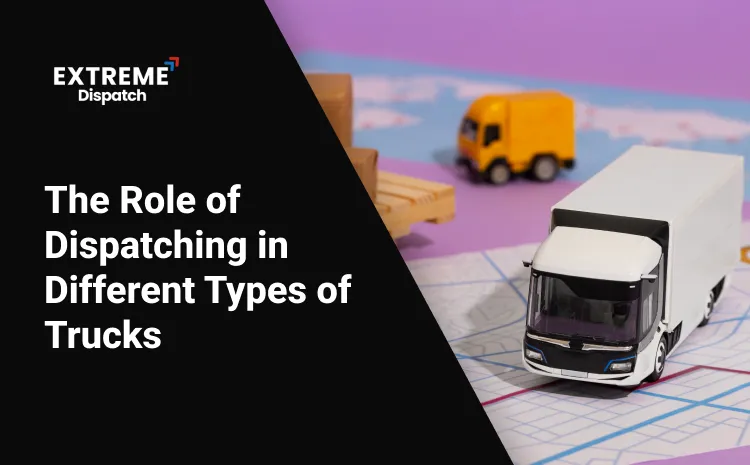The trucking industry keeps the economy moving, but behind every successful driver or fleet is a team working tirelessly behind the scenes, the dispatchers. Without them, drivers would spend countless hours chasing loads, negotiating with brokers, handling mountains of paperwork, and keeping up with ever-changing compliance requirements.
That is where an experienced truck dispatch service like Extreme Dispatch comes into play. Dispatch services are the backbone of contemporary trucking operations, keeping drivers out on the road, reducing downtime, and increasing profitability.
So, what actually goes on behind the scenes within a dispatch service? How does the process go from that initial call with a driver to the final check after a load is dropped off?
In this article, we’ll take you through the entire dispatching process step by step, so you can see for yourself exactly how it works, and why so many truckers turn to companies like Extreme Dispatch to remain competitive in today’s market.
Step 1: Checking the Driver’s Profile
Each dispatch relationship starts with familiarizing oneself with the driver or fleet. Dispatchers don’t simply assign loads at random, they create a profile to know what type of work suits best.
Extreme Dispatch requires taking the time to learn:
- Equipment type: dry van, flatbed, reefer, hotshot, or power only.
- Preferred lanes and regions: long-haul, regional, or local runs.
- Earnings goals: target rate per mile or weekly income objectives.
- Lifestyle preferences: e.g., frequency the driver desires to be at home.
By establishing this profile, the dispatcher ensures that each load is suitable not only for the truck but also for the driver’s personal and financial priorities. For instance, an owner-operator operating a reefer might wish for seasonal produce loads in California, while a hotshot driver may desire quick, short runs to optimize trips per week.
This initial step avoids misplaced loads and establishes the groundwork for a profitable alliance.
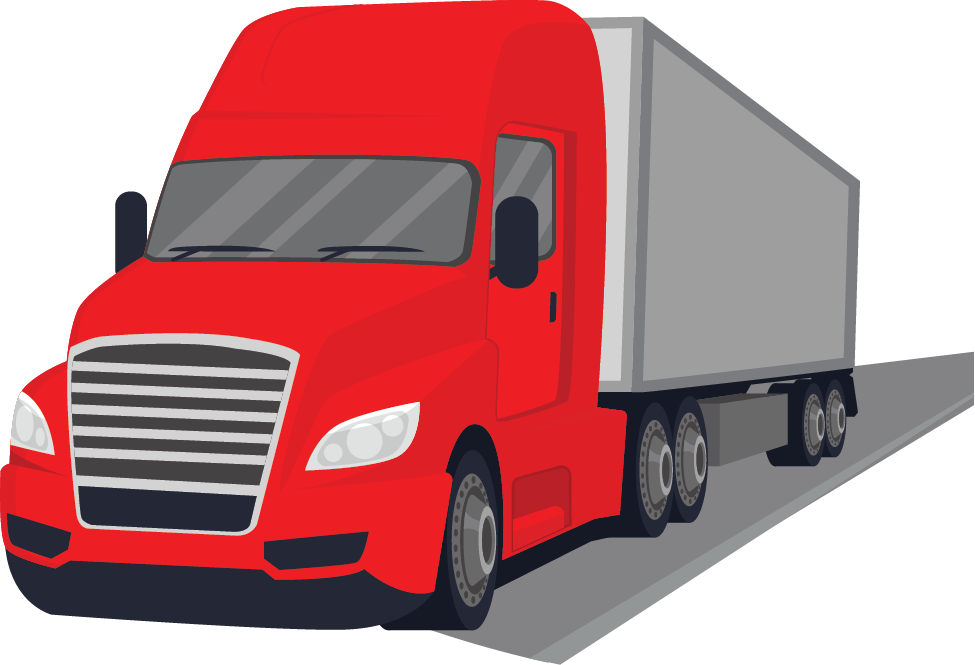
Keep Your Truck Moving – Get Consistent Loads Today
Step 2: Looking for Freight
When the driver’s profile is established, dispatchers initiate the search for loads. In contrast to solo drivers, dispatchers get to utilize several industry tools, such as:
- Top load boards where thousands of daily shipments are listed.
- Direct shipper networks that frequently aren’t available to solo drivers.
The dispatcher’s role is to sift through the chaff, weeding out cheap or low-productivity freight and concentrating on opportunities that support the driver’s objectives.
That’s where the expertise of Extreme Dispatch is worth it. Most brokers will list loads that sound great on paper but have strings attached, such as a high amount of deadhead miles or unrealistic appointment windows. Dispatchers are experienced enough to recognize these and avoid expensive blunders.
Step 3: Negotiating the Best Rates
Getting freight is just half the fight. The battle is winning at a profitable rate.
Disciplined dispatchers negotiate with shippers and brokers on behalf of the driver. They negotiate better rates, reasonable detention pay, and good terms that benefit the driver’s bottom line.
For instance, a new driver may take a $2.00 per mile offer blindly, but an experienced dispatcher will negotiate the same lane to $2.40 per mile, a difference of hundreds or thousands of dollars in the end.
This negotiation ability is one of the highest reasons drivers go with companies like Extreme Dispatch. It’s more than simply reserving freight; it’s making freight worth hauling.
Step 4: Scheduling and Confirming Loads
Once a good rate has been secured, the dispatcher schedules the load. Accuracy at this level is paramount. A single paperwork glitch can lead to delay, missed deliveries, or problems getting paid.
Dispatchers verify and relay all information to the driver, such as:
- Pickup and delivery addresses in full.
- Appointment times and scheduling windows.
- Special requirements (e.g., tarps for flatbed, temperature settings for reefer).
- Broker or shipper contacts and reference numbers.
Drivers are given a definite load sheet with no possibility for confusion, avoiding expensive errors on the highway.
Step 5: Supporting Drivers on the Road
A dispatcher’s work is not done once a load is scheduled. In some respects, it’s only the start.
Dispatchers are the driver’s support system on the road. They track along, stay in contact, and assist in fixing problems like:
- Weather or traffic delays that could affect delivery times.
- Breakdowns, where they arrange with brokers or rebook appointments.
- Route changes, routing drivers to save extra miles.
- Load status, keeping shippers up to date to ensure trust and relationships.
This type of assistance is particularly beneficial to new owner-operators who lack experience and connections to overcome unexpected issues.
Step 6: Paperwork and Billing
Trucking involves more paperwork than most people know. Each load produces a pile of documents, and the absence of one single document can hold payment up.
Extreme Dispatch assists by taking care of billing and paperwork from beginning to end. This includes:
- Collecting signed bills of lading (BOLs) and proof of delivery.
- Preparing invoices for brokers or shippers.
- Submitting documents in a timely manner to enable quicker payments.
By automating this process, dispatch services save drivers from administrative hassles and drive, while enhancing cash flow.
Step 7: Keeping Up with Compliance
Compliance is the most stressful aspect of operating a trucking company. A single missed report or transgression can result in fines, penalties, or even suspension of operating authority.
Extreme Dispatch offers necessary compliance assistance such as:
- IFTA reporting: Monitoring miles and fuel buys for quarterly reports.
- DOT compliance: Maintaining hours-of-service regulations and driver logs accurately.
- Company formation: Assisting new drivers with organizing LLCs, corporations, or sole proprietorships properly.
By doing compliance, dispatch services keep drivers safe from expensive errors that might jeopardize their business.
Step 8: Closing the Load Cycle
After delivering the load, billing is done, and compliance is updated, the loop is closed. But with trucking, the activity never ceases. Dispatchers revert to Step 2 immediately, looking for the next money-making load to continue the wheels turning.
This loop, from scheduling and reserving to delivery and billing, is what makes drivers profitable week in and week out.

Keep Your Truck Moving – Get Consistent Loads Today
Why Drivers Use Dispatch Services
For most drivers, undertaking all these chores by themselves is overwhelming. Working with a dispatch service has a number of obvious benefits:
- Increased profitable loads through skillful negotiation.
- Less idle time, courtesy of effective scheduling.
- Relief from paperwork, with billing and compliance taken care of.
- Peace of mind, with the assurance that someone is there to rectify issues on the road.
In short, a dispatch service enables truckers to focus on what they are best at, driving, and leaves the rest to a professional crew.
Real-World Example
Take an owner-operator operating a flatbed truck as an example. By himself, he would probably dedicate four or five hours a day browsing load boards, calling prospects, and doing paperwork. That’s time that could be used to drive.
With Extreme Dispatch, he receives pre-negotiated freight, all documentation done, and compliance taken care of. Rather than doing business chores, he spends all his time hauling freight, which means more money in his pocket and less stress.
Conclusion
A truck dispatch service is more than a go-between for drivers and loads. It’s a full-service support system that navigates all aspects of the trucking process, from creating driver profiles and securing freight to handling paperwork, compliance, and payments.
At Extreme Dispatch, the process is designed to streamline operations, eliminate stress, and drive profitability for drivers and small fleets. From beginning to end, their dispatch services keep trucking companies humming, allowing drivers to concentrate on driving while the professionals take care of the rest.
For owner-operators and fleets that want to expand, associating with a trusted dispatch service isn’t merely convenient, it’s the best business move they can make.
FAQs
1. What does a truck dispatch service do?
It handles loads, routes, paperwork, compliance, and broker negotiations so drivers can focus on driving.
2. How do dispatchers find loads?
They use load boards, broker networks, and shipper connections to match freight with driver preferences.
3. Do dispatchers negotiate rates?
Yes, they secure better rates, detention pay, and terms that boost driver profitability.
4. Can dispatchers help during breakdowns or delays?
Absolutely. They reroute drivers, reschedule deliveries, and communicate with brokers to reduce downtime.
5. How do dispatch services manage paperwork?
They collect BOLs, prepare invoices, and submit documents promptly for faster payments.
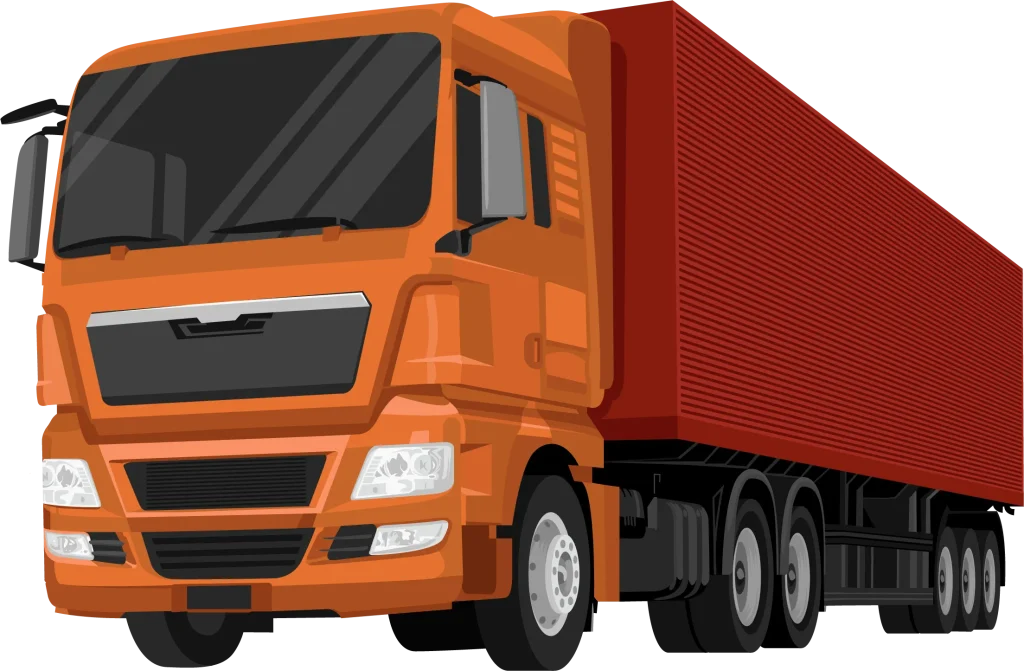
Subscribe to Learn more about Extreme Dispatch
By clicking “Subscribe” you agree to our Privacy Policy and consent to using your contact data for newsletter purposes

